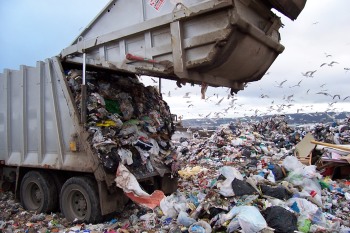 Although created in the manufacturing environment of Toyota by Taiichi Ohno, the Seven Wastes can be found almost everywhere, if you learn how to see them. Here’s some lean thinking for the warehouse:
Although created in the manufacturing environment of Toyota by Taiichi Ohno, the Seven Wastes can be found almost everywhere, if you learn how to see them. Here’s some lean thinking for the warehouse:
Overproduction – Think about the consequences when consumers, retailers, wholesalers, distributors, and manufacturers justify “just in case” or Murphy stock as a hedge against unplanned demand. Money, time, people, physical assets, the environment have all been tied up for something that isn’t needed.
Waiting – the ‘hurry up and wait’ of trucks sitting idle or drivers killing time awaiting their turn at the dock, or distribution center workers or lifts standing by waiting for tools, instructions, materials to arrive or to be taken away. Waiting comes from poor layout, lumpy demand, system batching. Then once the blockage is cleared we hustle.
Defective Product or Service – from picking errors, incorrect order quantities, misplaced stock to shipping on the wrong carrier or the wrong mode these errors consume resources of time, people and materials to no useful end. Worse yet, additional resources, often 2 or 3 times the original, are usually needed to correct the error.
Overprocessing – how about dock audits, redundant approvals, pick/pack/ship audits, cycle counting? Another example of overprocessing the the warehouse is the failure to rationalize the supply base and concentrate relationship management on a few top-tier suppliers. What about rationalizing the carriers? Both result in inefficient duplication of resources, decisions, and communications.
Moving Product – like overproduction, the unnecessary movement of product can occure both within the warehouse and throughout the entire supply chain. Too many steps, too many stops, unnecessary movement from suppliers though master DC’s to regional DC’s for further deployment to customers can be deadly drivers of cost and time, labor, and space.
Moving People – in the warehouse an enormous percentage of people’s time is devoted to movement, such as picking, put-away, and replenishment. Disorganized product locations, i.e. not slotting on a regular basis causing waster travel. If a facility isn’t well designed with easy access to “A” items an enormous amount of time can be wasted in traveling empty. When good aren’t where they’re supposed to be the movement to the wrong location is both a defect and a waste of human motion.
Ineffective Inventory Control – creates waste on several levels. Excess inventory based on bad inventory data diverts limited capital into creation and maintenance of waste. Excess inventory results in consuming valuable storage space to hold unnecessary goods. A scarcity of items, on the other hand, results in stock outs, expediting, or lost orders.